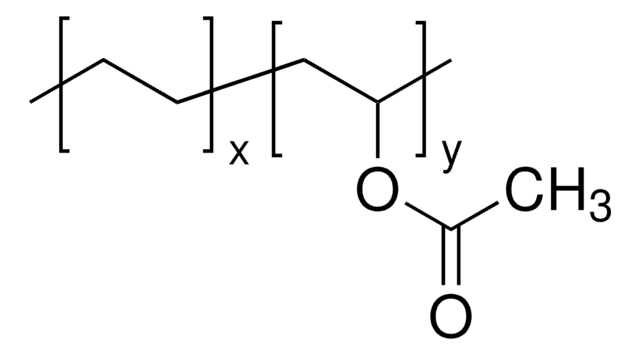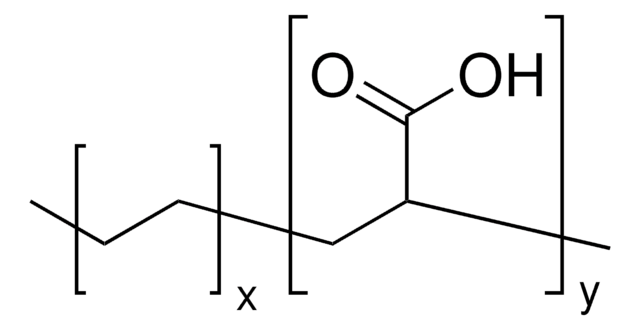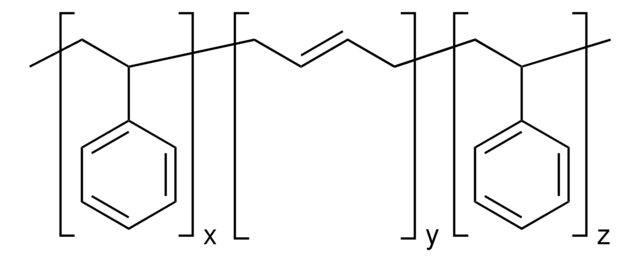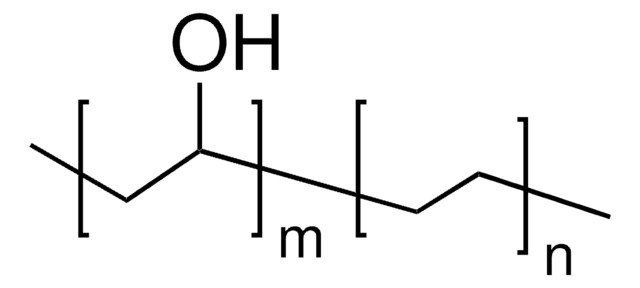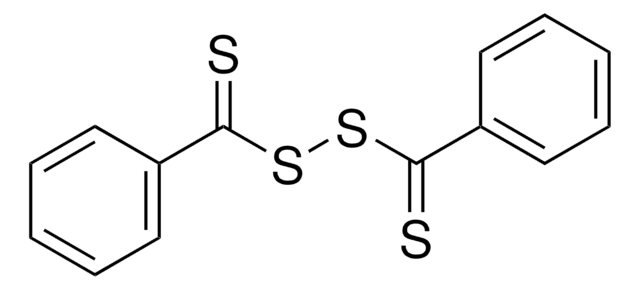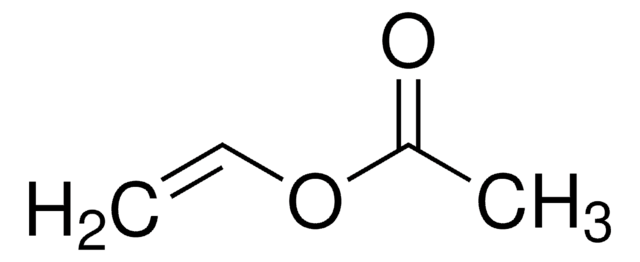437239
Poly(ethylene-co-vinyl acetate)
vinyl acetate 18 wt. %, melt index 8 g/10 min (190°C/2.16kg), contains 200-900 ppm BHT as inhibitor
About This Item
Productos recomendados
Formulario
beads
Nivel de calidad
temp. de autoignición
500 °F
índice de fusión
8 g/10 min (190°C/2.16kg)
contiene
200-900 ppm BHT as inhibitor
composición
vinyl acetate, 18 wt. %
dureza
38 (Shore D, ASTM D 2240)
mp
87 °C
temperatura de transición
softening point 61 °C (Vicat, ASTM D 1525)
densidad
0.94 g/mL at 25 °C
cadena SMILES
C=C.CC(=O)OC=C
InChI
1S/C4H6O2.C2H4/c1-2-3-4(5)6;1-2/h2H,1,3H2,(H,5,6);1-2H2
Clave InChI
DQXBYHZEEUGOBF-UHFFFAOYSA-N
¿Está buscando productos similares? Visita Guía de comparación de productos
Categorías relacionadas
Aplicación
Características y beneficios
Palabra de señalización
Warning
Frases de peligro
Consejos de prudencia
Clasificaciones de peligro
Carc. 2
Código de clase de almacenamiento
11 - Combustible Solids
Clase de riesgo para el agua (WGK)
WGK 2
Punto de inflamabilidad (°F)
Not applicable
Punto de inflamabilidad (°C)
Not applicable
Elija entre una de las versiones más recientes:
¿Ya tiene este producto?
Encuentre la documentación para los productos que ha comprado recientemente en la Biblioteca de documentos.
Los clientes también vieron
Global Trade Item Number
| Número de referencia del producto (SKU) | GTIN |
|---|---|
| 437239-250G | 4061832118222 |
| 437239-500G |
Nuestro equipo de científicos tiene experiencia en todas las áreas de investigación: Ciencias de la vida, Ciencia de los materiales, Síntesis química, Cromatografía, Analítica y muchas otras.
Póngase en contacto con el Servicio técnico